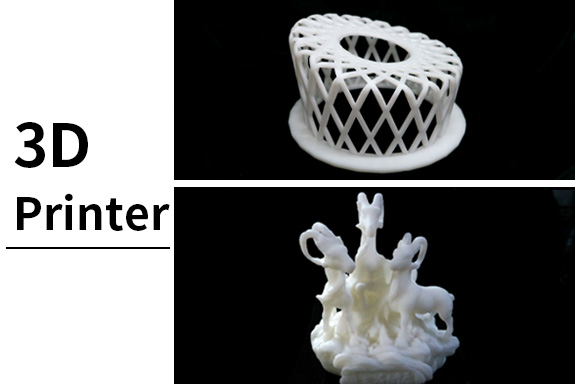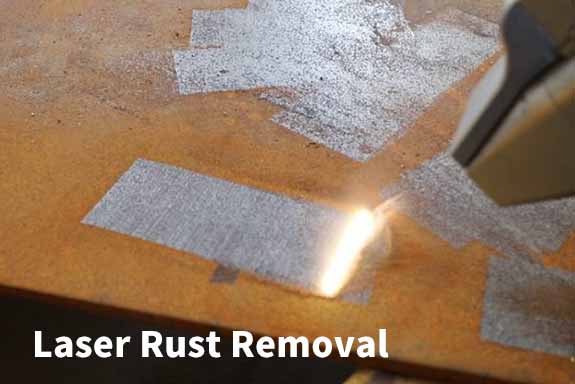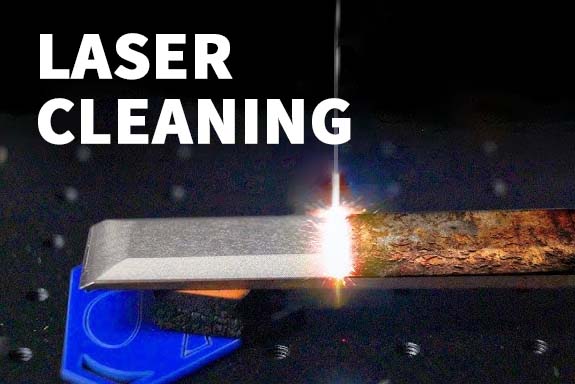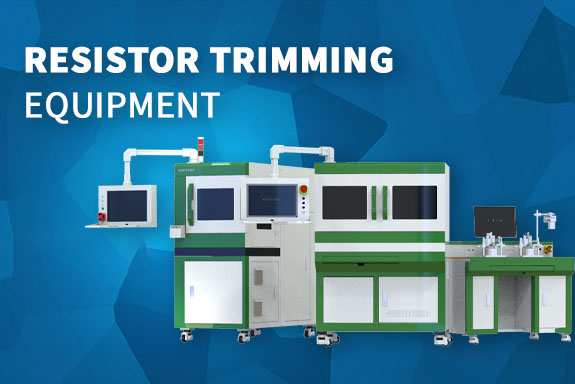In the world of modern manufacturing, laser welding equipment has become a critical tool for achieving high precision, speed, and reliability in welding processes. Specifically, laser beam welding is increasingly used across industries like automotive, aerospace, and electronics for its ability to create clean, durable welds with minimal heat distortion. In this guide, we will delve into the specifics of laser welding equipment, its advantages, types, applications, and how it is transforming the welding industry.
What is Laser Welding?
Laser welding is a process that uses a concentrated laser beam to join two materials, typically metals, by heating the surface until they melt and fuse. This method is known for its high precision and ability to weld small areas, making it ideal for delicate or intricate work. Laser beam welding is performed using specialized laser welding equipment, which focuses the laser beam onto the welding point to create a strong bond with minimal thermal distortion.
How Does Laser Welding Equipment Work?
Laser welding equipment operates by directing a highly focused laser beam onto the workpiece. The energy from the laser rapidly heats the material to its melting point, allowing the pieces to be fused together. The laser welder can either operate in continuous wave mode or in pulsed mode, depending on the specific requirements of the weld.
In laser beam welding, the laser provides concentrated heat, which minimizes heat-affected zones and prevents unnecessary material deformation. The precision of the laser welding equipment makes it possible to achieve clean welds without the need for extensive post-weld finishing.
Types of Laser Welding Equipment
There are several types of laser welding equipment available, each suited for different materials and applications. Choosing the right laser welder depends on the specific needs of the project and the types of materials being welded.
CO2 Laser Welding Equipment
CO2 lasers are one of the oldest types of laser welding equipment and are often used for welding non-metallic materials like plastics, as well as metals like stainless steel and aluminum. This type of laser welder uses carbon dioxide gas as a lasing medium and emits a powerful infrared laser beam.
CO2 laser welding equipment is ideal for applications where high power output is needed to weld thicker materials. While it is less efficient for small-scale precision welding, it excels in applications requiring high-speed welding of large components.
Fiber Laser Welding Equipment
Fiber lasers are a newer type of laser welding equipment that use optical fibers doped with rare-earth elements to generate the laser beam. These systems are highly efficient and versatile, making them ideal for metal welding applications. Fiber laser welding equipment is commonly used in industries like automotive, aerospace, and electronics.
Fiber lasers have a small focal diameter, which makes them perfect for welding thin metals and precision components. These systems offer high energy efficiency, minimal maintenance, and a long operational life, which makes them a popular choice for modern laser beam welding applications.
Nd
Laser Welding Equipment
Nd
(Neodymium-doped Yttrium Aluminum Garnet) lasers are solid-state laser welding equipment commonly used for fine, high-precision welding. They are particularly effective for welding metals with high reflectivity, such as copper, aluminum, and gold. Nd
laser welders operate in both pulsed and continuous wave modes, making them versatile for a wide range of applications.
This type of laser welding equipment is used for applications requiring deep penetration welding, such as in medical device manufacturing or the production of intricate electronic components.
Advantages of Laser Beam Welding
Laser beam welding offers numerous advantages over traditional welding methods like arc welding or TIG welding. Below are the primary benefits of using laser welding equipment.
High Precision and Accuracy
One of the key advantages of laser welding equipment is its precision. The focused laser beam allows for extremely accurate welds with minimal heat distortion to the surrounding material. This makes laser beam welding ideal for applications that require clean, intricate welds, such as in electronics or medical devices.
Speed and Efficiency
Laser welding equipment operates at much higher speeds compared to traditional welding techniques. This speed is especially beneficial in high-volume production environments, where manufacturers need to complete large quantities of welds in a short time. For example, in the automotive industry, laser beam welding can be used to rapidly join car body panels without compromising strength or quality.
Minimal Heat-Affected Zone
A significant advantage of laser beam welding is the minimal heat-affected zone (HAZ). The focused laser beam limits the amount of heat introduced to the material, reducing the risk of warping or distortion. This is particularly important when welding delicate or heat-sensitive materials, as it ensures that the structural integrity of the material is preserved.
Flexibility Across Materials
Laser welding equipment can be used to weld a wide variety of materials, including metals, plastics, and even ceramics. The versatility of laser beam welding allows manufacturers to work with different materials using the same equipment, reducing the need for multiple welding systems. In addition, laser welders can easily weld dissimilar materials, which is often a challenge for other welding methods.
Clean and Aesthetic Welds
Since laser welding equipment produces highly focused beams, it results in welds that are clean and smooth, requiring little to no post-weld finishing. This is a major advantage in industries where aesthetics and precision are crucial, such as in consumer electronics or jewelry manufacturing.
Applications of Laser Beam Welding
Laser beam welding is used in a wide range of industries for applications that require precision, speed, and minimal thermal distortion. Here are some key industries where laser welding equipment is commonly employed.
Automotive Industry
In the automotive industry, laser welding equipment is widely used for joining body panels, frame components, and engine parts. The speed and precision of laser beam welding make it ideal for mass production, where high-quality welds are required in a short amount of time. Laser welders are also used for welding difficult-to-reach areas, where traditional welding methods would be impractical.
Aerospace Industry
The aerospace industry demands high-strength, lightweight components, and laser welding equipment plays a crucial role in achieving these standards. Laser beam welding is used to join thin, lightweight materials such as titanium and aluminum, which are commonly used in aircraft manufacturing. The minimal heat-affected zone and high precision of laser welders ensure that the structural integrity of aerospace components is maintained.
Electronics and Microelectronics
In the electronics industry, laser welding equipment is used for the precise welding of delicate components, such as sensors, connectors, and microchips. The ability of laser beam welding to produce clean, small-scale welds without damaging sensitive electronic parts makes it essential for the production of consumer electronics, medical devices, and telecommunications equipment.
Medical Device Manufacturing
The medical device industry relies on laser beam welding for producing high-precision, sterile components. Laser welding equipment is used to weld stainless steel, titanium, and other metals commonly used in medical devices like surgical instruments and implants. The precision and cleanliness of laser welders ensure that these devices meet stringent health and safety standards.
Choosing the Right Laser Welding Equipment
Selecting the right laser welding equipment depends on several factors, including the materials being welded, the production volume, and the level of precision required. Here are some key considerations when choosing a laser welder.
Material Type
Different types of laser welding equipment are suited to different materials. For example, fiber lasers are ideal for metals, while CO2 lasers are better suited for non-metals like plastics. It’s important to select the right laser welder based on the materials you plan to work with to ensure optimal welding performance.
Power Requirements
The power output of the laser welding equipment determines the thickness and type of material that can be welded. Higher-power laser welders are necessary for welding thicker materials, while lower-power systems are suitable for fine, precision welding on thin materials. Matching the power of the laser welding equipment to the specific application is essential for achieving quality welds.
Welding Speed
For high-volume production environments, the speed of the laser welding equipment is a critical factor. Faster laser welders allow manufacturers to complete more welds in less time, increasing overall productivity. However, it’s important to balance speed with precision to ensure that the weld quality is not compromised.
Precision and Accuracy
If your application requires high-precision welding, such as in medical device manufacturing or electronics, selecting laser welding equipment with advanced precision capabilities is essential. Systems that use beam steering technologies, such as galvano mirrors, offer the highest levels of accuracy.
Maintenance and Care for Laser Welding Equipment
Proper maintenance of laser welding equipment is critical to ensure long-term reliability and consistent welding performance. Regular upkeep minimizes downtime and extends the life of the system.
Cleaning the Optics
The optics in laser welding equipment, such as lenses and mirrors, need regular cleaning to remove dust and debris. Contaminated optics can affect the laser beam’s focus and reduce the quality of the weld.
Cooling System Maintenance
Most laser welding equipment includes cooling systems to prevent the laser source from overheating. Regularly inspecting and maintaining these systems helps avoid damage caused by overheating and ensures that the laser operates efficiently.
Routine Calibration
Calibrating the laser welding equipment periodically ensures that the laser beam is focused correctly and maintains consistent welding quality. This is particularly important for applications requiring high precision, as even small misalignments can affect the accuracy of the weld.
The Future of Laser Welding Equipment
The future of laser welding equipment is bright, with advancements in laser technology and automation continuing to improve the speed, precision, and efficiency of laser beam welding.
Automation and Robotics
The integration of robotics with laser welding equipment is already transforming manufacturing processes, allowing for fully automated welding lines. As robots become more advanced, they will be able to handle more complex welding tasks with minimal human intervention, further increasing the efficiency of laser beam welding.
Enhanced Laser Power and Control
Advances in laser technology are expected to increase the power and control of laser welding equipment, allowing for faster and deeper welds on a wider variety of materials. Future laser welders may also incorporate AI-driven control systems, enabling real-time adjustments for even greater precision.
Green and Sustainable Welding Solutions
As industries move towards more environmentally friendly practices, laser welding equipment is likely to evolve to become more energy-efficient. Reduced energy consumption and the elimination of harmful gases in certain laser systems will contribute to more sustainable manufacturing processes.
Conclusion
Laser welding equipment plays a critical role in today’s advanced manufacturing industries, offering unparalleled precision, speed, and versatility. With the growing adoption of laser beam welding technology across sectors like automotive, aerospace, electronics, and medical device manufacturing, it’s clear that laser welders will continue to be an essential tool for high-quality production. As the technology evolves, the future of laser welding equipment promises even greater efficiency, automation, and environmental sustainability.
由用户整理投稿发布,不代表本站观点及立场,仅供交流学习之用,如涉及版权等问题,请随时联系我们(yangmei@bjjcz.com),我们将在第一时间给予处理。







